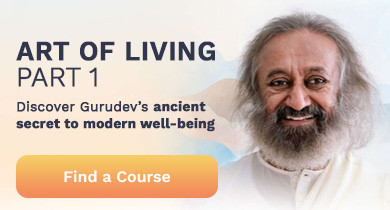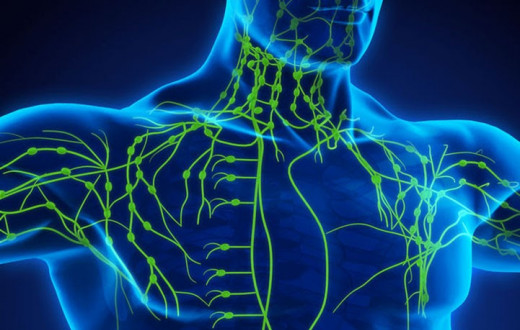By Elizabeth Herman | Posted: December 09, 2019
Sometimes, the source of tension comes from within you, from deep within the caverns of your massive data reserve that you don’t usually think about, otherwise known as the subconscious.
Author Gil Mayer defines the subconscious mind as “a data-bank for everything which is not in your conscious mind. It stores your beliefs, your previous experience, your memories, your skills. Everything that you have seen, done or thought is also there.”
When stress and tension rear their ugly heads, stepping back and identifying the role of your subconscious can help you to relax and alleviate the problem. You can place less blame on external factors when you establish a relationship with this powerful internal part of yourself.
Where does the data come from?
Information that gets stored in your subconscious can come from every aspect of your being, including your physical, mental, and emotional experiences. Using methods from each of these areas, you can stimulate the subconscious and make sure that you stay in control of the messages it sends you. Recognition of subconscious messages takes time and practice.
Sometimes, these messages take the form of negative thoughts and attitudes, which often turn out to be self-defeating. In extreme cases, they can also result in self-destructive outcomes. Nobody really wants to hurt themselves, but sometimes the conscious and subconscious minds can translate that way when a disconnect occurs between different parts of the human being.
Here are some suggestions for becoming more aware of subconscious promotion of stress and tension, often occurring in response to challenging situations in the present moment.
9 tips for addressing tension
For your body:
Be outdoors each day: The sun, clouds, fresh air, wide sky, rain, snow, wind, plant life, animal life and all of the other aspects of outdoor environments make a big difference to the way your body processes your thoughts and attitudes. Taking time each day (even 5 minutes can change things), to leave indoor spaces and connect with our eternal backdrop, nature, brings your mind in touch with a larger perspective on situations. It will help you conjure up different subconsciously stored information than what you’re receiving indoors as you work consciously to solve problems.
Yoga asanas: Like many other physical exercises, yoga postures help the brain to release relaxing chemicals into your system. In addition, these poses have spiritual associations with nature and animals and evoke power and control when practiced regularly. By assuming these postures and holding them, you tell your mind how to transform the past into the present and future you desire. You let go of emotional blocks and painful memories more easily, and find stress eliminated at its source.
Fresh food: The food we eat stimulates the subconscious memories we have buried. Smells and tastes have deeply ingrained associations that can powerfully impact the way we consciously react. To change your life force, you can start to eat freshly made whole grains, fruits, vegetables, nuts, and seeds, and feel and think more positively as a result. Because stress results from too much work and not enough energy to complete it, you won’t create stress and tension when you’re nourished to maintain energy and function smoothly.
For your mind:
Journaling: Keeping a diary or journal allows your mind to distance itself from any thoughts, memories, or problems you may grapple with on a daily basis. You can use it to describe your challenges, or use it to describe your joys and blessings. According to Joni Emmerling, a wellness coach in Greenville, NC, “Being grateful for your blessings cancels out negative thoughts and worries.” Either way, putting words on paper provides you with an opportunity to reflect and become less caught up in the stress and tension surrounding what you’re writing about.
Talking: If you find someone to talk to, you can put your stress and tension in its place, especially if the person you talk to offers you support and friendship. Looking into a friendly face helps you identify your own true feelings, and brings clarity when subconscious material has created confusion.
Meditating: With regular meditation, you take a few minutes each day for effortlessness, mental rest and relaxation. You have nothing to do, think, have, want, or be during those moments, and therefore you start to go beyond the stress of your mind. When the conscious and subconscious both take time off, conflicts come to a halt, and the natural tendencies of your mind and body to heal themselves can kick into gear and start re-energizing for your next round of efforts. Coming back to work after a twice daily meditation break, I have been able to address external issues with extra vim and vigor.
For your emotions:
Laughter: Humor consistently plays a big part in relieving stress and tension between people, and does the same for our inner life. The ability to laugh at oneself is a trait of the healthiest people, and you can find an emotional outlet through laughter that doesn’t hurt others or yourself. Look for the irony in any situation, and make a point of laughing whether the laughter comes spontaneously or not. The habit of laughter can be self-perpetuating. In other words, the more you make yourself laugh, the more likely you will be to laugh spontaneously. An active, happy sense of humor can make you a more relaxed and likeable person, fun for others to be around.
Company of all ages: Take time to be with older and younger people whom you’ve never met, even those who are much older or much younger. They’ll help you get in touch with subconscious memories and buried experiences that may be influencing you today. If you support someone at a preschool or a nursing home who may be going through vulnerable times in their life, you’ll feel more powerful and have more confidence about your ability to handle problems. This will reduce your tension about yourself and allow you to relate with others more freely, in a less stressed context like your current work or family situations.
Service: This tip may overlap with the others, depending on where and how you choose to serve, but it deserves a status all its own because it addresses so much stress and tension internally. Helping others in various ways as a volunteer can alleviate the negative messages about yourself that you have stored up over time, and replace that self-talk with a positive self-image. It stops you from thinking about your own problems. You’re not only becoming a better person through service; you’re feeling better and experiencing all kinds of relaxing emotions, like gratitude, joy, confidence, respect, dignity, etc. Do yourself and others a favor by serving someone today, tomorrow, and the next day!
I hope these tips on holistic stress relief will help you. For more on relieving stress and tension in daily life and for long term relaxation, try an Art of Living Happiness Program or Sahaj Samadhi Meditation course near you!
Elizabeth Herman writes, offers writing support to clients, teaches, and volunteers for a better world. She has a PhD in Rhetoric, Composition and Literature. Find her on Facebook or Twitter.





























